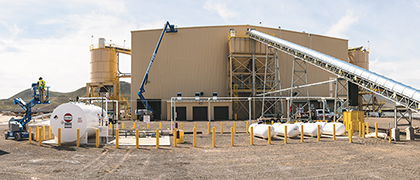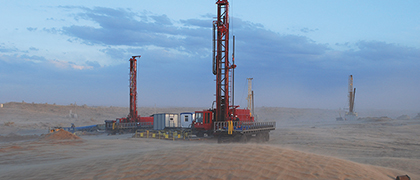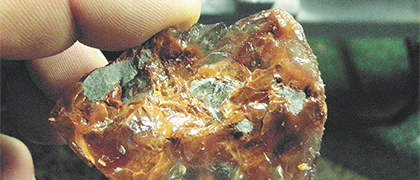Mining and Power Magazine
Circa 2014 - 2015
This was the beta site for the new Mining and Power Magazine.
The content below is from 2014-2015 articles.
To find all of your industry-related resources in the current mining industry, go to www.miningmagazine.com/, www.powermag.com/, or https://issuu.com/worldminingmagazine/docs/wm_12_goldcorp__web_
About Mining and Power Magazine

The landscape of the mining and power industries is constantly being altered. With an abundance of resources and revolutionary changes, how is your company evolving in this progressive market? It is important to know what can be achieved and the most efficient ways to accomplish your goals.
Power provides the economy with billions of dollars each year. With the nation’s use of advanced technologies there have been remarkable breakthroughs in energy. Responding to challenges with innovative strategies while improving on productivity and sustainability will move your company forward.
Mining companies have also faced their challenges, but today they are taking active steps to respond. The need for mineral resources is driven by the emerging markets, and these commodities are in high demand. The industry has a renewed focus on finding inventive ways to protect the environment and improve safety. Understanding the diversity of this business and knowing how to assess your options will help expand your projects.
In such an immense field all aspects are critical. A skilled workforce, having reliable equipment, maintaining customer relationships, and sound management are key principals to ensuring your company’s success. It is also imperative you know the functions of refiners, transporters, distributors and utilities. These are all essential to developing your operation.
Understanding what makes a complex and rapidly growing market such as this thrive, is vital. Your company needs to be able to progress with it. Mining and Power Magazine will keep you in the know about key solutions along with providing you information on products and services to keep you at the forefront. This magazine will reveal strategies from your top competitors, as well as show you the broad range of protective measures they are taking. Mining and Power is the source you need to help your operation succeed.
FEATURE ARTICLES FROM 2015
OPM Metals
- Written by Brian Salgado
AS OPM METALS turns 40 this year, the company positions itself for international expansion via a number of strategic moves.

As OPM Metals celebrates its 40th anniversary this year, it continues to take major steps toward becoming an international player in the precious metals refining industry. Along with “good delivery” certifications from two of the top international trade associations for gold and silver refiners, a rebranding effort and a timely transaction, OPM Metals relies on its tried and true values of transparency, consistency and speed to build upon its decades of success.
“At OPM, we pride ourselves on these aspects of our business,” says Conor Dullaghan, who was named president of OPM Metals at the start of this year after becoming the company’s vice president in 2011.
L.A. Perks Petroleum Inc.
- Written by Brian Salgado
L.A. Perks Petroleum Inc. penetrates the mining industry of Northern Nevada to diversify its capabilities after the downturn of the economy.
\
As the recession took its toll on the energy industry throughout the United States in the latter part of the last decade, countless companies took surviving as a victory. Not many can claim that the challenge of staying afloat spurned a new, prosperous division within a niche market
L.A. Perks Petroleum Specialists Inc. made that a reality, however. Instead of cutting costs to compete with less-qualified contractors making impossible promises to clients to land contracts for unrealistic prices in the Reno, Nev., region, Kylen Perks led his family-owned business to northern Nevada and the mining industry based there.
Mincon Group
- Written by Andrew Santa Lucia
With 10 companies globally located, Mincon Group is taking strides to become the choice of drillers worldwide.

Mincon Group PLC was founded in 1977 by Paddy and Mary Purcell to produce state-of-the-art engineered rock drills and associated parts. The company, however, has had “a clear vision and determined focus giving priority towards manufacturing top quality tools that bring added value to the end user,” Executive Director Tom Purcell says. Those same values hold true today and have allowed the company to evolve and grow healthily from its “home base in Shannon, Ireland, into a multinational company working in markets all around the world.”
The Mincon Group is comprised of 10 companies in strategic locations around the world including Ireland, Australia, United States, Sweden, South Africa, Poland and Peru. By locating operations worldwide, Mincon achieves a global outlook on its business and how it works with its clients. Being on the ground also helps Mincon work closely with clients to direct them toward the best products for their needs.
N.A. Degerstrom Inc.
- Written by Brian Salgado
N.A. Degerstrom Inc. has helped mine owners achieve their goals for 110 years through mine management.

As safety and environmental regulations continue to be piled onto the mining industry, operating a safe and sustainable mine site grows more difficult with each passing year. That’s why N.A. Degerstrom (NAD) Inc. shares its clients challenges to passionately deliver solutions.
“We firmly believe in working with – rather than for – our clients,” says Scott Upton, business development manager for NAD. “The demand for mine management is greater now than it has ever been. We understand, and this is what sets us apart from the rest.”
NAD is more than just a mining contractor. The company has built hundreds of miles of highways throughout the Northwest; constructed bridges and railroads, including work for the SP&S and Great Northern Railway (now Burlington Northern); and worked on hydroelectric dams, including Rock Island and Wanapum on the Columbia River, and Dworshak on the Clearwater River.
Their work is impressive.
Karnalyte Resources Inc.
- Written by Rodric J. Hurdle-Bradford
Karnalyte Resources Inc. looks to the future with plans for a new solution mining facility focused on potash.

Successful leadership begins at the top, no matter what the industry, and Saskatchewan-based Karnalyte Resources Inc. is proving this true as its experienced senior executive management team oversees its vision to become a leading low-cost producer of high quality, low sodium potash for agricultural and industrial markets.
“Our vision includes our intention to construct and operate a solution mining facility capable of producing 2.125 million tons of potash per year,” says Robin Phinney, president, CEO and director.
Karnalyte Resources’ production plan calls for a staged approach to plant construction where the first phase of the project will result in production of 625,000 tons of potash per year that eventually will increase to 2.125 million tons per year. Karnalyte owns 100 percent interest in subsurface permit KP360A and subsurface mineral lease KLSA-010 located near Wynyard, Saskatchewan, comprising a total of 85,126 acres.
FEATURE ARTICLES FROM 2014
Kenneth Klemm Q&A with Mining & Power Magazine
Kenneth Klemm talks with Mining & Power Magazine about his role as co-chair of Baker Donelson's Oil & Gas Industry Service Team and how he helps energy companies with their legal challenges as well as how to avoid litigation.
"The most effective means of trying to protect against litigation involves being proactive and cognizant of the current legal environment in all aspects of a company's operations. From addressing a landowner's concerns before a situation escalates to the level of the landowner hiring counsel to preserving evidence from field incidents through a proper investigation, companies may be able to either prevent litigation or, at a minimum, collect the information and data necessary to defend against a later claim. The public, in general, seems more inclined to bring lawsuits than ever before. But, in some instances, an individual simply may be looking for an explanation or quick resolution of what it perceives to be a wrong such as an improper royalty payment or damage to property. Early intervention by a client's legal team or outside counsel may be able to resolve such issues prior to a lawsuit being filed. On the other hand, the preservation of evidence and an investigation coordinated by in-house or outside counsel also can lead to better results when a casualty or other incident occurs that most likely will give rise to litigation. The key seems to be a client proactively addressing issues before litigation occurs or possessing the information necessary to defend claims made against that client."
Executive Leadership for Compliance to Commitment
October 10, 2014
Author: William Holder, Vice President, Health, Safety and Loss Control | Coeur Mining, Inc. (CDE)
There is no question that compliance with health and safety regulations is a critical component of successful operations in any industry. Nevertheless, because these regulations are externally imposed, there is a tendency for health and safety to be viewed as an ancillary function to the primary activities of any organization. This externally focused approach to health and safety has the potential to adopt a “compliance mindset.” This attitude becomes an avoidance approach to negative external consequences, instead of a positive and progressive methodology to prevent risks.
An alternative to the compliance mindset is the “commitment mindset,” which is an internal, integrated and holistic approach to process improvement. This commitment mindset requires serious and sustained engagement and leadership, starting with the organization’s executive team. The executive leadership creates the atmosphere that empowers the entire organization to be involved in the continual improvement of health and safety practices and gives all employees permission to challenge the status quo. Another way to compare the two philosophies is:
- Conforming people try to follow the rules; committed people try to do the right thing.
Why strive for a commitment mindset? The overarching tenet of this philosophy is that the behaviors that occur at a worksite are supported by the culture and systems of the organization and those closest to the risk are in the best position to identify at-risk behaviors and develop strategies to reduce that risk.
The four components of a commitment mindset
At its most elemental level, attaining success when it comes to creating a commitment mindset requires four components:
LeadershipLeaders create the atmosphere that drives and supports the culture, beginning with the Board and Executive Leadership.
Engagement-Engagement at all levels of the organization is crucial, because it strengthens commitment, which results in increased ownership.
Sustainable solutionsMaking sure all solutions can be sustained in the organization to support health and safety requires more than developing policies and providing training. It entails a close look at people, plant and processes to carefully design solutions in non-safety areas that promote lasting change.
Systems focusThe workforce can only perform as well as the systems they work within. It is important to avoid blaming employees for an incident and instead work to understand what was driving the actions or why the risk exposure was not recognized.
Moving from a compliance mindset to a commitment mindset requires the organization to address a number of important tasks. It starts with integrating safety processes into all functions across the organization, including Operations, Human Resources, Communications, Internal Audit and Finance. With each of these functions, it is important to include safety accountability into performance management, site ratings and job evaluations. This is accomplished by setting specific and measurable goals beyond the traditional lagging safety measures, ensuring engagement at the front line and following through with coaching, feedback and clear communication.
Leaders are responsible for creating the right atmosphere
Adopting a commitment mindset is challenging; the challenge is that the organization’s leadership must create an atmosphere that empowers and supports employees to become engaged leaders in risk identification and mitigation. To accomplish that, it is important to examine a number of systemic organizational issues, including:
- How consistent are supervisors’ decision-making processes?
- Do supervisors have employees’ best interests at heart?
- Do employees receive the support needed to accomplish organizational goals?
- Is collaboration an effective way to get tasks accomplished?
- Do team members treat each other with respect?
- Do employees perceive that the company values safety performance?
- Does safety communication flow freely throughout the organization?
- Do employees feel free to communicate about problems and issues, especially safety?
Realizing the benefits of employee engagement
Leveraging the power of employee engagement can transform the entire organization so that it takes a proactive approach in identifying and mitigating risk. The resulting culture will deliver many ancillary benefits that include empowering team members to identify risks, strengthening leadership and accountability and collecting data for analysis to prescribe solutions. A proactive approach has the capability to remove barriers to continual improvement and drive improvement in non-safety business areas
The safety professional’s role
The role of the “safety professional” should be to become change agents and problem solvers of the continual improvement approach within the safety philosophy. Safety professionals are in the position to lead efforts for management system implementation and should be encouraged and given the ability to solve problems. They should also receive ongoing professional development in order to continue increasing their skill levels at driving continual improvement in all business areas, not just safety.
Safety professionals are the champions or facilitators for safety processes, but not solely responsible for safety. A delicate balance must occur in adopting a commitment mindset—every functional department must be a business partner with safety. Operations must own their safety programs, not simply comply with regulations. Education and collaboration are essential elements in the process, and evaluating with assessments promotes best practices and continual improvement.
Commitment is the driver
Attaining the goal of continual improvement in health and safety behaviors requires more than a compliance mindset. It moves beyond what is deemed compulsory to behaviors that are truly part of the fabric of the organization’s cultural identity. For that to happen, the organization must take steps from the top-down and the bottom-up to embody a continuous improvement approach to attain a commitment mindset in all business functions, not just health and safety.

More Background On MiningAndPower-Magazine.com
MiningAndPower-Magazine.com represents a unique moment in the evolution of trade-industry publishing within the mining, energy, and industrial-power sectors. Although the site operated primarily as a beta publication around 2014–2015, its collection of feature articles, industry profiles, and thought-leadership essays provides insight into the priorities, challenges, and forward-thinking strategies shaping both industries at the time. The publication sat at the intersection of two massive sectors undergoing technological transition: resource extraction and power generation—each central to the global economy, each navigating new demands for efficiency, environmental sensitivity, globalization, and workforce modernization.
What Mining and Power Magazine accomplished during its short beta period was significant: it curated a snapshot of the companies, executives, and operational philosophies that defined an important era in modern mining and energy infrastructure. It centered its content on problem-solving, productivity, worker safety, leadership culture, and the technological tools emerging to meet new industry pressures.
While the website was not long-running and does not appear to have developed into a full commercial publication, the archived materials remain valuable as industry documentation. This article provides a comprehensive overview of the website’s mission, content, prominence, audience, cultural significance, and historical relevance.
The Mission and Goals of Mining and Power Magazine
Mining and Power Magazine was designed to act as a practical, solutions-driven resource for professionals navigating both mining operations and power generation infrastructure. Rather than focusing on investor news or general commentary, the beta site’s “About” section made it clear that the publication aimed to help companies:
-
Adapt to new technologies
-
Meet operational and regulatory challenges
-
Strengthen safety culture
-
Improve productivity
-
Understand market forces
-
Evaluate equipment and service providers
-
Benchmark themselves against competitors
The recurring editorial theme stressed that both mining and energy were industries experiencing rapid change, influenced by:
• Advanced technologies
Automation, precision drilling, digital monitoring systems, new energy solutions, improved metallurgy, and innovations in extraction and refining.
• Environmental pressures
Companies were increasingly required to show measurable progress in sustainability, emissions reduction, water usage efficiency, reclamation, and ecological stewardship.
• Workforce transformation
Sectors with aging workforces were turning toward new generations of skilled labor, demanding improved training, communication, engagement, and leadership accountability.
• Globalization
Companies were shifting from regional contractors to multinational operations, expanding supply chains, and competing in an international marketplace for commodities and energy assets.
The magazine’s stated goal was to be a “source to help your operation succeed”—a descriptor that framed the publication as more of a strategic guide than a traditional news outlet.
Editorial Style, Structure, and Focus Areas
MiningAndPower-Magazine.com centered its editorial philosophy on feature profiles, company case studies, and executive insights. The beta site did not function like a day-to-day news portal; instead, it offered high-value long-form articles aimed at business leaders, operational managers, and technical professionals.
Major recurring editorial topics included:
-
Corporate leadership and management culture
-
Environmental and regulatory compliance
-
Drilling technology and equipment innovation
-
Safety performance and workforce best practices
-
Refineries, distributors, and utilities
-
Strategic planning for global growth
-
Mine construction, management, and oversight
-
Operational efficiency and optimization
-
Industry diversification strategies
The tone of the writing emphasized practical strategy, real-world challenges, and solutions implemented by top-tier companies. This positioned the magazine as a platform for companies seeking acknowledgment of their forward-leaning operational models.
Historical Context: Why the 2014–2015 Era Mattered
The mid-2010s were a transitional era in mining and energy sectors. Commodity prices were volatile; global growth was uneven; environmental regulations were tightening; and new technologies were reshaping long-standing industrial methods.
Mining and Power Magazine emerged during a period marked by:
1. Increased scrutiny on mining practices
Communities, regulators, and international organizations were demanding improved sustainability, reduced emissions, and safer worker environments.
2. The shift toward automation and advanced equipment
From automated drilling rigs to high-efficiency turbine systems, companies were investing heavily in the next generation of industrial technology.
3. A renewed focus on safety culture
This period saw the industry adopt more sophisticated safety protocols, analytics-driven risk mitigation, and leadership accountability frameworks.
4. Post-recession restructuring
Energy and mining companies that survived the late-2000s downturn were diversifying, globalizing, and restructuring operational strategies.
Mining and Power Magazine served as a platform for documenting and analyzing these changes through in-depth company profiles and executive commentary.
Key Feature Articles and Their Significance
The beta site included a series of substantive feature articles, each offering insight into prominent companies navigating growth challenges, technological advancement, or shifting market conditions.
• OPM Metals
A detailed profile of OPM Metals spotlighted the company’s strategic steps toward international expansion, supported by high-level certifications and a strong emphasis on transparency and operational excellence. Leadership perspectives emphasized the values of consistency, speed, and customer trust.
• L.A. Perks Petroleum Inc.
This feature chronicled how a family-owned petroleum specialist expanded into the Northern Nevada mining sector during a difficult economic period—a move that became a catalyst for diversification and long-term growth.
• Mincon Group PLC
An extensive profile of Mincon, a global drilling-equipment manufacturer, highlighted the company’s rise from a small Irish business to a multinational footprint through engineering innovation, local presence, and strong client-focused adaptation.
• N.A. Degerstrom Inc.
A 110-year-old company specializing in mine management and infrastructure construction, NAD’s profile showcased the firm’s legacy in roads, bridges, hydroelectric projects, and mining operations. Its approach of collaboration, rather than simple contracting, was emphasized as a differentiating factor.
• Karnalyte Resources Inc.
This article focused on a major potash development initiative in Saskatchewan, driven by staged construction planning, strong leadership vision, and long-term resource management strategies.
• Executive Leadership Articles & Q&A Features
Content such as Kenneth Klemm’s legal insights and William Holder’s piece on “commitment mindset” vs. “compliance mindset” provided sophisticated commentary on management philosophy, regulatory understanding, and workforce culture.
These articles collectively provide a multidimensional portrait of the mining and power industries during the magazine’s active period.
Audience and Industry Reach
Although Mining and Power Magazine did not become a long-running publication, the content strongly suggests it was aimed at:
-
Mining contractors
-
Refiners and processors
-
Drilling and exploration teams
-
Energy generators and utilities
-
Engineering firms
-
Health, safety, and environmental professionals
-
CEOs and executive leadership
-
Equipment manufacturers
-
Consultants and industry analysts
The magazine appealed to professionals who valued long-form insight, as opposed to quick news bites. Its audience likely consisted of decision-makers seeking guidance on operational challenges.
Popularity and Online Visibility
Because MiningAndPower-Magazine.com functioned primarily as a beta-phase publication and was not continuously updated after 2015, its long-term popularity remained limited. Indicators suggest:
-
The site existed mainly to pilot the concept of the magazine.
-
It received modest traffic from industry searches and internal references.
-
It served as a showcase platform for feature articles rather than a mass-audience publication.
Despite limited reach, the quality of the editorial content demonstrates a professional effort to establish credibility, particularly through:
-
Corporate interviews
-
Detailed company histories
-
Leadership commentary
-
Industry-specific insights
This content remains useful as a historical reference for the period.
Cultural & Social Significance
Mining and Power Magazine holds cultural value as a snapshot of industrial priorities during a decade of transformation. Its articles highlight issues that remain globally relevant:
• Worker safety as a foundational principle
The shift from a compliance mindset to a commitment mindset in safety practices was a major industry conversation.
• Environmental stewardship
Companies were increasingly judged not only by output but by sustainability, reclamation, and emissions standards.
• Global competition and supply chain realities
Mining and power companies had to adapt to international certifications, global logistics, and cross-border partnerships.
• The role of leadership culture
Executives were expected to model transparency, accountability, and strategic foresight, reflecting broader corporate-governance trends.
• Technological integration
Automation, data analysis, and smart monitoring were reshaping both industries long before today’s modern digitization surge.
Thus, even though the publication was short-lived, it represents an important historical record from a transitional era.
Why the Website Still Matters Today
MiningAndPower-Magazine.com remains relevant because:
-
It documents how companies responded to major industry pressures.
-
It captures leadership thinking about risk, safety, environment, and operational excellence.
-
It preserves early-2010s corporate perspectives before today’s advanced digitization.
-
It offers case studies still referenced today for company history, product strategy, and mining-sector evolution.
-
It reflects the growing interconnectedness of mining, power production, manufacturing, and global supply networks.
Even as the beta site’s activity ceased, the content still serves researchers, historians, analysts, and industry veterans.
Proximity, Physical Operations, and Organizational Structure
Because Mining and Power Magazine functioned as a beta-stage web publication, it did not operate from a publicly advertised physical office, nor did it list an editorial board, staff directory, or mailing address. This limited transparency suggests:
-
It may have been affiliated with a smaller publishing group.
-
It may have been planned as a sister publication or experimental brand extension.
-
It may have intended to grow but never reached full commercial launch.
The absence of traditional magazine structure—subscriptions, print editions, mastheads—further supports the conclusion that the site was in development rather than final deployment.
Press & Media Coverage
There is no evidence that Mining and Power Magazine received major external media coverage, awards, or large-scale press recognition. This is consistent with its status as a short-run beta project.
However, individual companies featured in the magazine—such as Mincon Group, OPM Metals, and others—often reference or archive their features independently, which helps preserve the publication’s content.
MiningAndPower-Magazine.com stands as a brief but valuable entry in the landscape of industrial trade publishing. Its 2014–2015 beta-era content offers rich insights into companies, leadership strategies, safety culture, technology adoption, and industry transformations during a pivotal decade.
While it did not continue as a long-term publication, the material it produced remains historically useful, technically informative, and culturally relevant to the evolving story of mining and energy operations.
Mining and Power Magazine ultimately serves as a snapshot of an industry in motion—a record of how companies confronted challenges, innovated, expanded, and prepared themselves for the future.